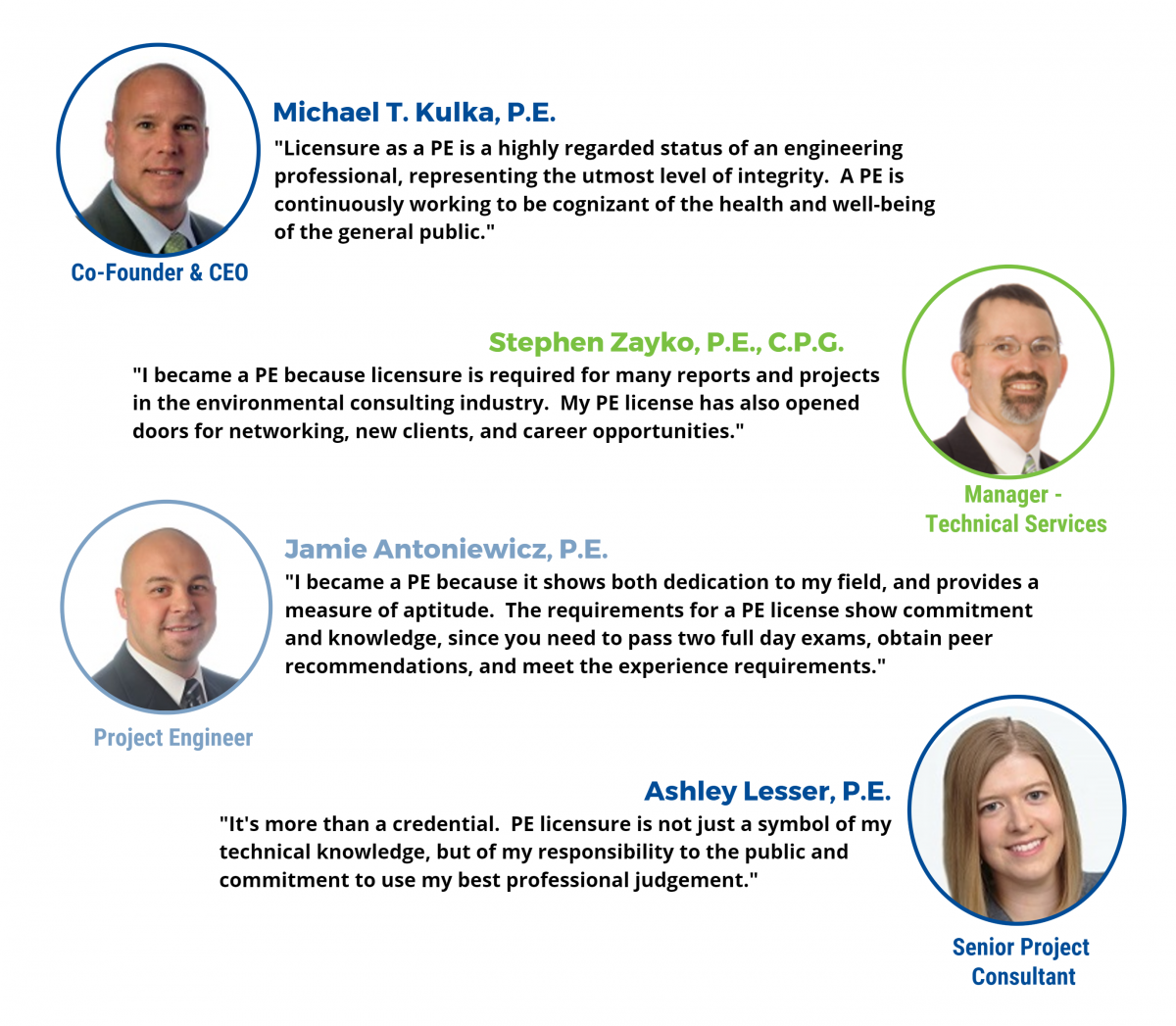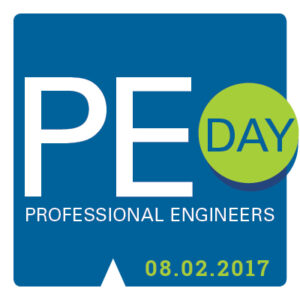PM Environmental Celebrates P.E. Day
Considered the highest standard of competence for the engineering profession, PE certification not only enhances an engineering professional’s stature, but also represents higher levels of authority and responsibility.
Unlike many majors, graduating doesn’t automatically mean you are a certified P.E. There are two major tests and four years of documented work experience in the industry to get through.
Fundamentals Test
“Most people take the Fundamentals test as soon as they graduate to get it out of the way,” said Jamie Antoniewicz, P.E., Project Engineer at PM environmental.
After passing the test, it’s onto the working world for four years.
Experience
At the end of this period, five people – including three Professional Engineers (P.E.) – were formerly needed as a reference and to sign off on your experience. This requirement in Michigan was eliminated in April 2017; however, documentation of professional experience remains a requirement.
Principles and Practice of Engineering (P.E.) exam
The intensive eight-hour exam tests a candidate’s ability to practice competently in a particular engineering discipline. The environmental engineering test covers water, solid waste, air, site assessment and remediation, environmental health and safety and associated engineering principles.
“It’s tough because not everything on the test is something we do every day,” said Antoniewicz. “For example, site assessment and remediation make up about only 20 percent of the test,” he said.
Continuing Education
Even after successfully passing the test and earning certification, to maintain the P.E. title, you have to log 30 hours of continuing education every two years. This includes seminars, workshops or courses.
Quick Facts: Environmental Engineers
Number of Jobs, 2014 – 55,100
Job Outlook, 2014-24 – 12% (Faster than average)
Employment Change, 2014-24 – 6,800
Why did you become a P.E.?

News Details
Date
August 2, 2017

